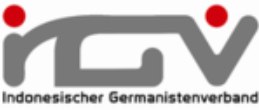THE USE OF EDUCANDY INTERACTIVE MEDIA FOR LEARNING INOFFIZIELLE UHRZEITEN
Abstract
Differences in the way of expressing official and unofficial time in German often make students have difficulty in understanding Uhrzeit material, especially inoffizielle Uhrzeiten. One of the efforts to overcome this is by utilizing a variety of learning media, such as Educandy interactive media. The purpose of this research is to find out: 1) The level of students' understanding of inoffizielle Uhrzeiten material before the use of Educandy media, 2) The level of students' understanding of inoffizielle Uhrzeiten material after the use of Educandy media, 3) The effectiveness of using Educandy media to improve students' ability to master inoffizielle Uhrzeiten material. This research uses quantitative methods with quasi-experimental types. The population in this study were all grade X students at SMA Pasundan 1 Bandung in the 2022/2023 school year with a research sample of 24 students of grade X MIPA 4 as the experimental group and 21 students of grade X MIPA 3 as the control group. The results of this study are as follows: 1) The average test scores of the experimental group and control group before treatment were in the poor category, 2) After treatment, the average test score of the experimental group was in the very good category, while the control group was in the good category, 3) Based on the results of the Independent Sample t-Test, the use of Educandy media proved to be effective. This is evidenced by the significance value (2-tailed) obtained less than 0.05 (<0.001). Thus, Educandy media can be an alternative learning media in learning inoffizielle Uhrzeiten.
Full Text:
PDFReferences
Hamid, M. A., Ramadhani, R., Juliana, M., Safitri, M., & Jamaludin, M. M. (2020). Learning media. Yayasan Kita Menulis.
Hoffmann, B. (2008). Medien im Unterricht. Universität Trier.
Kozma, R. (1991). Learning with media. Review of Educational Research, 61, 179–211.
Küsel, J., & Markic, S. (2021). Interactive Lernmedien in der Ausbildung der Lehrerinnen der Naturwissenschaften. k: ON-Kölner Online Journal für Lehrerinnenbildung, 4(2), 159.
Lange, C., & Costley, J. (2020). Improving online video lectures: Learning challenges created by media. International Journal of Educational Technology in Higher Education, 17.
Lewis, S., Lindgren, R., Wang, S., & Pea, R. (2019). Learning with media. Journal of Media Psychology, 31.
Lubis, L., Febriani, B., Yana, R., Azhar, A., & Darajat, M. (2023). The use of learning media and its effect on improving the quality of student learning outcomes. International Journal of Education, Social Studies, and Management (IJESSM).
Nabila, S. M., & Indriwardhani, S. P. (2022). Application of anagram game based on educandy application in learning German vocabulary for students of class X language of SMA Islam Kepanjen. JoLLA: Journal of Language, Literature, and Arts, 2(10), 1418.
Penelitian, J., Ipa, P., Nababan, D., Wijayanti, A., Nashrallah, M., Arum, W., & Sari, S. (2023). Web-based learning media for distance education: A review. Jurnal Penelitian Pendidikan IPA.
Purba, R. A., Rofiki, I., Purba, S., Purba, P. B., Bachtiar, E., Iskandar, A., Febrianty, Yanti, Simarmata, J., Chamidah, D., Purba, D. S., & Purba, B. (2020). Introduction to learning media. Yayasan Kita Menulis.
Reinecke, S. (2012). Die Gestaltung interaktiver Medien am Beispiel von YouTube. Grin Publishing.
Rösler, D., & Würffel, N. (2014). DLL 5: Lernmaterialien und Medien. Klett-Langenscheidt.
Tafonao, T. (2018). The role of learning media in increasing student learning interest. Journal of Educational Communication, 2(2), 106–107.
Ulya, M. (2021). The use of educandy in evaluating Indonesian language learning. Journal of Indonesian Language and Literature Education, 10(1), 55–57.
DOI: https://doi.org/10.17509/alm.v13i2.71763
Refbacks
- There are currently no refbacks.
Copyright (c) 2024 Genita Cansrina, Hana Sofia, Hana Sofia, Hafdarani Hafdarani, Hafdarani Hafdarani

This work is licensed under a Creative Commons Attribution-ShareAlike 4.0 International License.
This journal provides immediate open access to its content on the principle that makes research freely available to the public and supports a greater global exchange of knowledge.
This work is licensed under a Creative Commons Attribution-ShareAlike 4.0 Internasional (CC BY-SA 4.0).

_(1)_(1)_(3)_.png)

